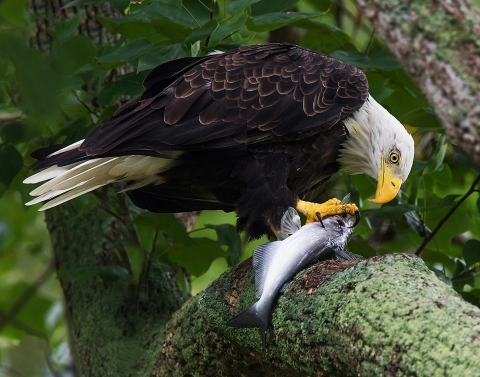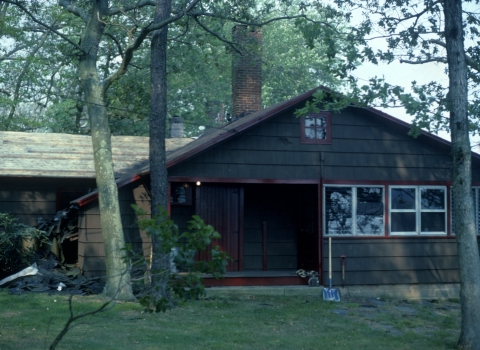News
Wertheim National Wildlife Refuge Closes Little Neck Run For Nesting Bald Eagles
The staff of Wertheim National Wildlife Refuge continue to monitor the pair of bald eagles that are nesting at the refuge. Recent observations of the eagles at the nest site prompt a seasonal closure of Little Neck Run to public access. The closure will help reduce disturbance to the birds and help protect the nest location during this very sensitive time. Once eagles select a nesting territory, they tend to use it for the rest of their lives.
Bald eagles reach sexual maturity at five years of age and obtain the characteristic white head and tail. They build large nests in tall trees and prefer undisturbed areas along the shorelines of rivers, marshes and large lakes. In the northern U. S., eagles generally initiate nest building in December - January. Egg laying and incubation (33-35 days) can start in February and chick hatching and rearing takes place in March – May. Eaglets make their first unsteady flights 10-12 weeks after hatching and begin fledging in June – August. Refuge staff conduct bi-weekly observations of the Wertheim nest, and will re-open Little Neck Run after chick fledging.
With the use of a spotting scope or binoculars, some favorable locations for visitors to view eagles and other wildlife include the Black Tupelo trail, Indian Landing and refuge overlooks along the Carmans River. Visitors are reminded to obey closed area boundary signs and to adhere to refuge regulations.
Bald eagles were removed from the endangered species list in 2007, but are still federally protected under the Migratory Bird Treaty Act and the Bald and Golden Eagle Protection Act. These acts help to ensure the safety of eagles and their parts (feathers, nests and eggs) from hunting, collection, harassment and other harmful actions.








